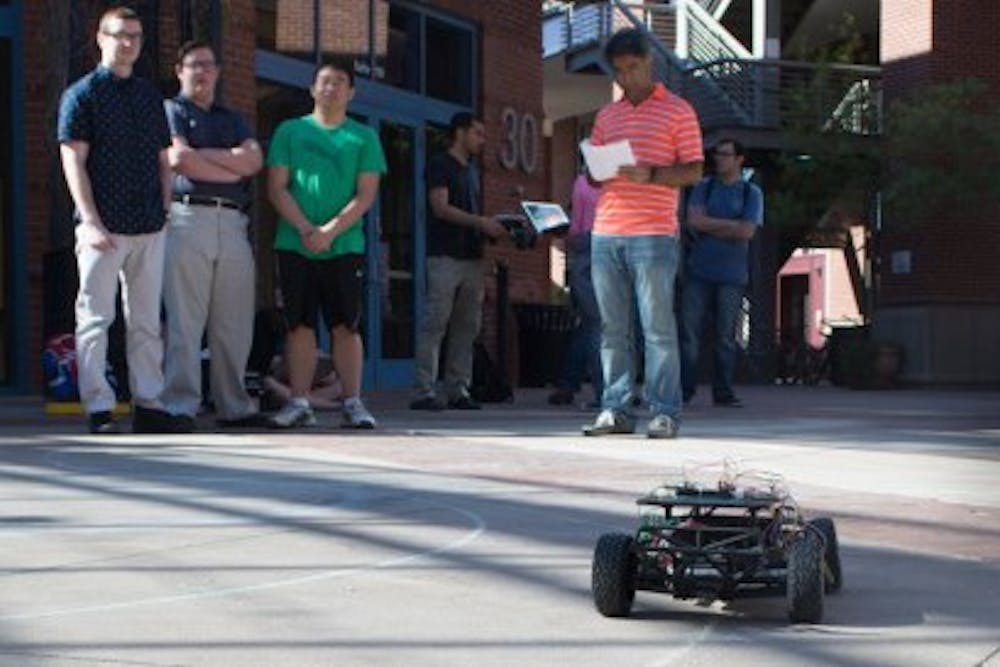When associate professor Aviral Shrivastava realized he was going to teach Embedded Microprocessor Systems, he decided to focus on a new facet of robotics, emphasizing how robots work from the very beginning to the final product.
Embedded Microprocessor Systems is a course designed to teach students programming and analysis of complex computing systems through the Ira A. Fulton Schools of Engineering.
Shrivastava said engineering classes often focus on the mechanical side of robotics, but fail to mention two other important parts: software and electrical.
“A lot of these complex systems used to be mechanic,” Shrivastava said. “Just by knowing mechanical, you can’t just do robotics.”
Shrivastava said the class will be split into three components: The parts and materials section explaining how the batteries and robot motors work, the software section explaining how to create software to control and navigate systems, and the control systems section explaining how to make the system behave the way you want it to.
“These three parts come together to make a system,” Shrivastava said. “To learn the systems, you need to know all three parts.”
After the students learn all of the necessary skills for the course, they will get to put their robots to the test, where they will race their autonomous cars against classmates.
“They are doing the complete thing from scratch to a racing car," Shrivastava said.
Students will start their cars on one side of the park, and they will have to reach another side of the park by racing through natural obstacles like trees. Students will have to control their cars so they won’t run into anything during the race.
“The big difference I’m trying to bring in this course is that the project in this class is end to end,” Shrivastava said. “They are not just doing a small portion of something. It’s pushing the whole thing.”
Computer science sophomore Alex Arena said he would be interested in the software competent of the class and thinks it’s an interesting addition to the Fulton school.
“I haven’t taken a robotics class, mainly because I’m a computer science major, so I’m personally more interested in the software side of the equation,” Alex wrote in an email. “That being said, I’m happy to see a shift away from a competition in the hardware vs. software 'tribes.' I think what the technology community has realized in recent years is that truly great innovation comes at the intersection of hardware and software."
Arena said classes like the new engineering class are why ASU lives up to its title of most innovation.
“By focusing on real world applications in the classroom, this class prepares students for the engineering careers that are in such high demand,” Arena wrote. “This class is one of many great examples that demonstrate why ASU is the nation’s most innovative school.”
Biomedical engineering sophomore Wanda Sihanath said she’s never taken a robotics class before, but after hearing about Shrivastav’s class, she’d be open to taking it to help with her future career.
“I've always had opportunities to join through school clubs growing up but it was never the biggest interest for me at the time,” Sihanath said. “But now that I'm advancing into my (biomedical engineering) major where I do eventually want to work to develop robotic limbs and devices in the future, it would definitely be ideal to take a robotics class in the near future.”
Related links:
ASU hosts state robotics championship
Reach the reporter at sgreene6@asu.edu or follow @thesydneygreene on Twitter.
Like The State Press on Facebook and follow @statepress on Twitter.




